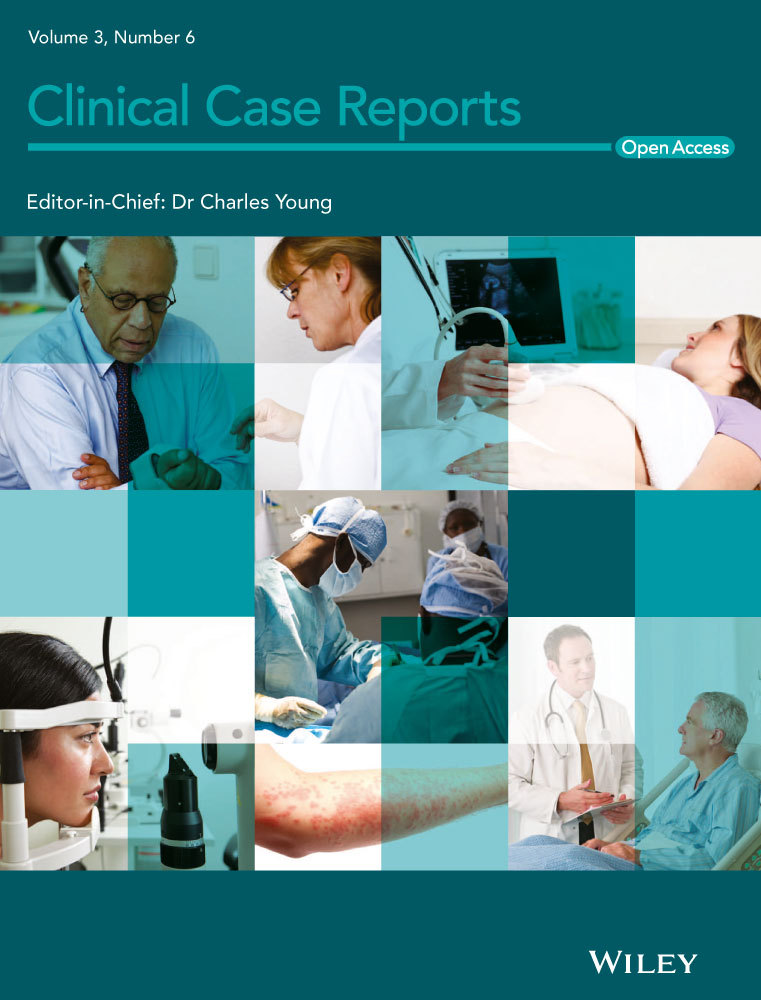2q31.1 microdeletion syndrome: case report and literature review
Key Clinical Message
We describe a preterm neonate with bilateral coloboma of the iris, upper and lower limb malformations including rocker bottom feet, camptodactyly, and clinodactyly together with microcephaly and small for gestational age whom cytogenetic diagnosis using SNP microarray detected an interstitial deletion of chromosome 2 between 2q31.1 and 33.1.
We describe a preterm neonate with bilateral coloboma of the iris, upper and lower limb malformations including rocker bottom feet, camptodactyly, and clinodactyly together with microcephaly and small for gestational age whom cytogenetic diagnosis using SNP microarray detected an interstitial deletion of chromosome 2 between 2q31.1 and 33.1.
The clinical phenotype of chromosome band 2q31 deletion syndrome consists of limb anomalies ranging from monodactylous ectrodactyly, brachydactyly and syndactyly to camptodactyly. Internal organ anomalies such as heart defects and ocular anomalies may also be present. Previous reports of interstitial deletions on chromosome 2 at 2q31.1 have described limb abnormalities as well as less specific abnormalities such as microcephaly, developmental delay, mild facial dysmorphology, scoliosis, and growth retardation. Limb abnormalities have ranged from mild digital abnormalities including syndactyly and brachysyndactyly to more severe malformations such as split hands and/or feet, and even monodactyly 1-6. Ocular and genital abnormalities and cardiac defects have also been reported. Slavotinek et al. 6 have reviewed the phenotypes associated with 2q24-2q31 and 2q31-33 deletions. The 2q31.1 region includes the HOXD cluster, one of four highly evolutionally conserved, homologous gene clusters coding for transcription factors with crucial roles in embryonic development. More specifically, the HOXD cluster has been implicated in limb formation 4, 7.
A 1575-g male small for gestational age preterm neonate was born by cesarean section delivery to a 20-year-old primigravida at 335/7 weeks' gestation. Apgar scores were 8 and 9 at 1 and 5 min, respectively. Prenatal care was uneventful. The family history was negative for congenital anomalies, and there was no history of in-utero exposure to known teratogens. Physical examination revealed a weight of 1575 g (<10th centile), length 40 cm (<10th centile), head circumference 28 cm (<10th centile). Multiple anomalies were noted at birth including: small for gestational age, cloudy cornea, bilateral coloboma of the iris, microcephaly, rocker bottom feet, overriding of the fourth and fifth toes, broad big toes, camptodactyly, mallet index fingers, hand dimples, finger-like thumbs, stubby fingers, and fifth finger clinodactyly (Figs. 1, 2 and 3). Neurosonogram showed thin corpus callosum. Echocardiography showed small ventricular and atrial septal defects.



Cytogenetic and Molecular Studies
SNP microarray analysis was performed using the Affymetrix CytoScan HD platform. There was a 23.16 megabase (MB) deletion between 2q31.1 and 2q33.1. The deletion interval contains several numerous OMIM genes [start: SP3 to end:PGAP] (Fig. 4). Clinically significant genes within the interval include HOXD gene. Standard and high-resolution karyotype analyses of both parents were normal.

Interstitial deletion of 2q is rare, and hence, there are very few case reports 8. Recent advancement in molecular cytogenetic techniques, for example, microarray analysis has further delineated microdeletion from band 2q31 to 2q33: the 2q31.1 microdeletion syndrome, 2q31.2q32.3 microdeletion syndrome, and 2q33.1 microdeletion syndrome 8-10. The common features include developmental delay, speech delay, learning disability, psychiatric problems, growth retardation (before and after birth), short stature, microcephaly, facial dysmorphism, and various limb abnormalities 2, 3, 5.
The deletions on chromosome 2 at 2q31.1 have been associated with less specific abnormalities such as scoliosis have ranged from mild digital abnormalities including 1, 4, 6. Abnormalities of other organ systems such as ocular and genital, and cardiac defects have also been described. For a review of the phenotypes associated with 2q24-2q31 and 2q31-33 deletions, see Slavotinek et al. 6.
There are 30 genes mapped to this region according to the Human Genome Sequences (Build 36.3, 2008), including the entire HOXD gene cluster (HOXD13, HOXD11, HXOD10, HOXD9, HXOD8, HOXD4, HOXD3, HOXD1) 11. The HOXD gene cluster plays a key role in the formation of the arms and legs in embryonic life and is believed to be the root cause of the unusual hands and feet seen in the reported cases of a 2q31.1 microdeletion 9. The reported limb malformations were: duplication of great toes or broad great toes, broad thumb, tapering fingers, clinodactyly of the fifth finger, symphalangism, syndactyly, brachydactyly, arachnodactyly, ectrodactyly, monodactyly, split hands/feet, overlapping toes, and hypoplastic nail 5, 11-13. We report a neonate with a mallet finger, which has not been described previously. A new SHFM5 locus, and DLX1 and DLX2 have been proposed to be involved in hand and foot formation 12.
Coloboma of iris has been reported in two cases with 2q31q33 and 2q24.3q32.1 microdeletion 5, 14.
Congenital defects of the eyes, brain, and heart as well as clefts, scoliosis, and seizures are common in patients with 2q31 deletion, but there is no specific gene/deleted region linking these clinical features to the deletion.
In summary, we report case of a 2q31.1 microdeletion syndrome in a neonate, most of reported cases were in age range from 3 to 19 years. The phenotypes of our case: growth retardation, microcephaly, small corpus callosum, coloboma of irises, atrial and ventricular septal defects, short stature and various limb defects help defining a distinct 2q31.1 microdeletion syndrome in neonatal period.
Conflict of Interest
None declared.




